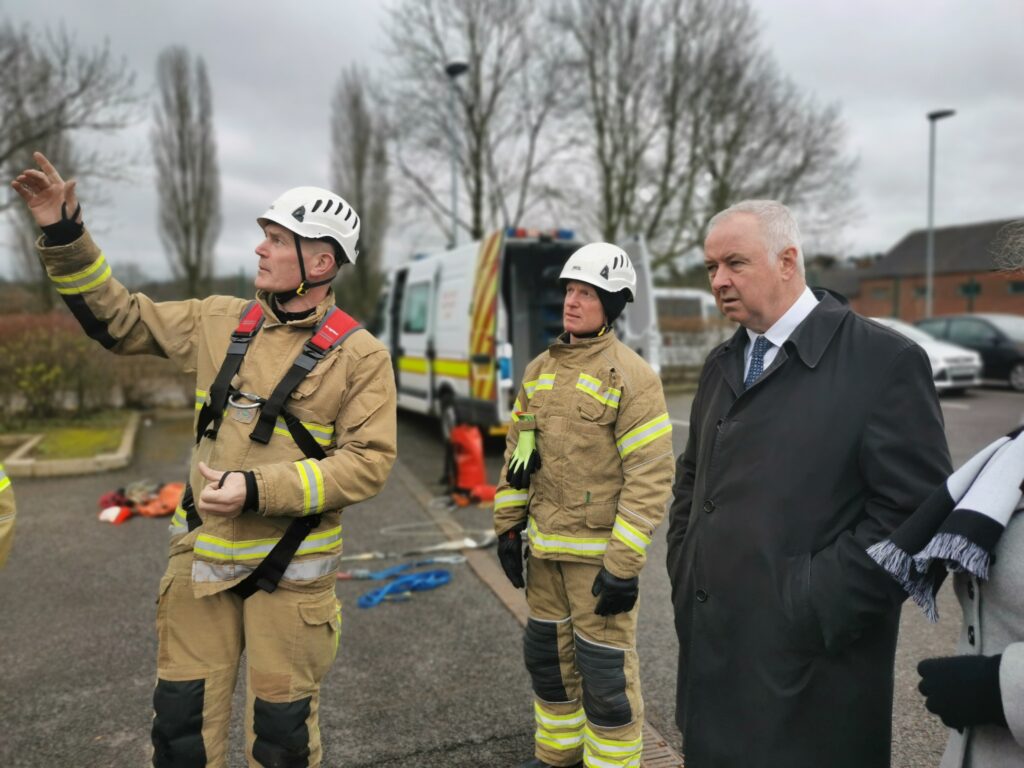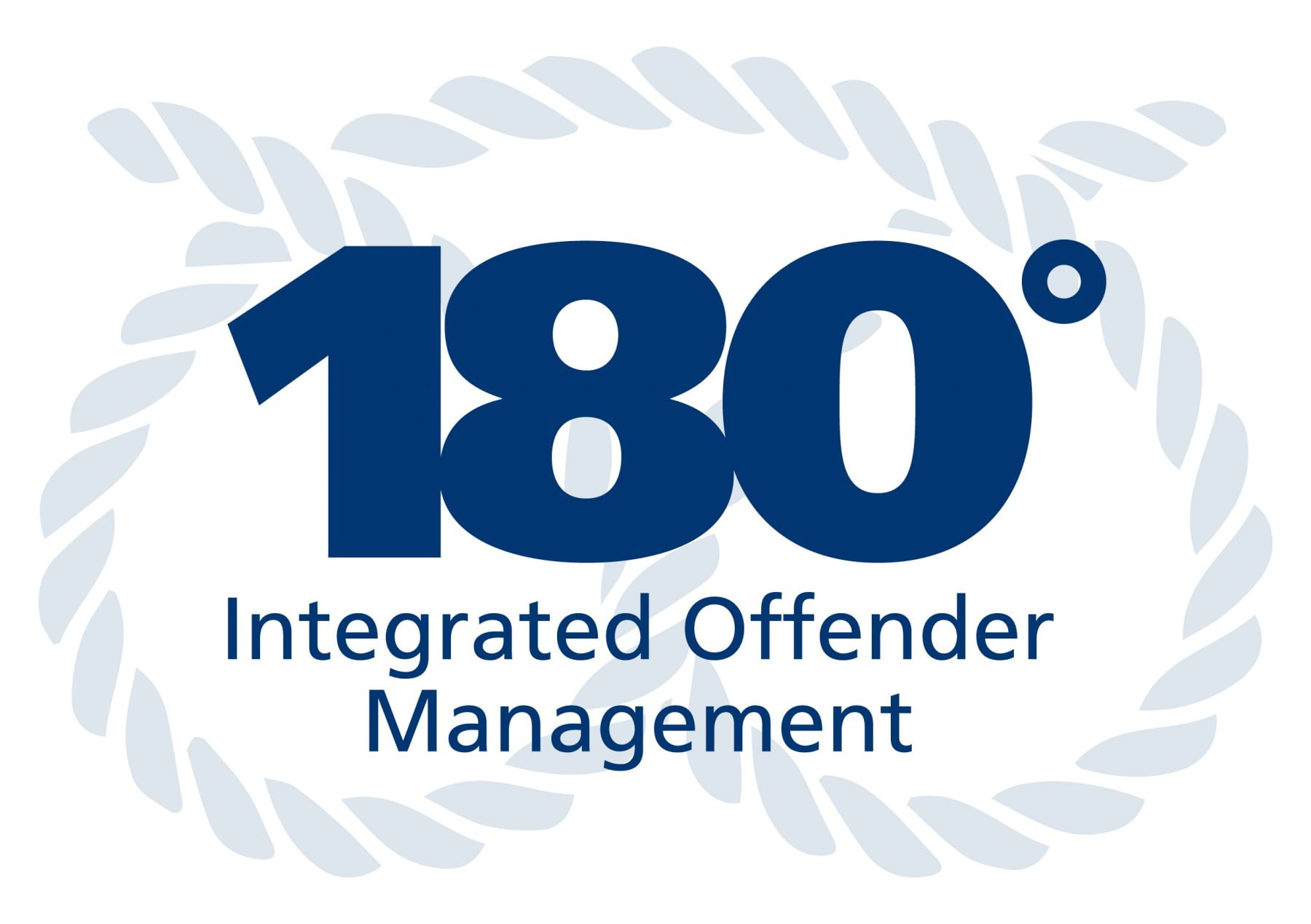Inspector Melissa Byrne – IOM Inspector
The unique part of IOM is that there are different models that operate in different areas because it’s actually about local solutions to local problems and is very much about what kind of local partnerships arrangements exist in each of the local areas. So historically, our staff driver model was based around serious, acquisitive crime Offendum. But we’re now looking to utilize a selection matrix that’s based across all crime types because we recognize that offenders don’t fit into boxes. In order to achieve this, we are going to utilize a selection matrix that has a sound academic basis and ultimately allows us to choose those offenders that are committing the most crime harm to their communities, coupled with live in the most chaotic lifestyles and therefore having the most needs.
The investment of police resources is also really important because we actually recognize in staffordshire police that the rehabilitation of offenders can save significant money to the criminal justice process. The new IOM model will also see the introduction of weekly case management meetings, where a variety of those that are working with those individuals will come round the table and will be able to set actions and discuss what progress has been made to date. The new IOM scheme will see a simple referral process.
So for internal police staff, it’s as simple as picking up the phone to the northern and southern hubs, giving us the details of the individual and why you think that they are suitable for selection to the IOM scheme. And finally, there will be a performance framework that will sit around this IOM model, which will allow us to actually show what benefits we’re getting out of all of the dedicated resources that we put into IOM. So we will look at the crime harm that is committed by an individual prior to this election, to the IOM scheme, and then we’ll measure that harm whilst they’re selected to the scheme and ultimately after they’ve exited the scheme.
So that allow us to show this the impact that we have and the reduction in harm that that individual commits in those communities.
Jake Morris
Had a bit of a chaotic childhood, not many boundaries put in place. And then I suppose I started getting in with the wrong kind of people, a lot older than me from a from a very young age. So 12 years old, started drinking, staying out overnight. And it quickly progressed on to drugs and crime, and that quickly became like a routine kind of thing, it was instead of going and playing football with the lads, or going boxing or something like that, it was take drugs in the garage and go and nick cars and motorbikes.
And it just it just got out of hand from there, getting into states. So I’m getting locked up and I don’t even know what I’ve been locked up for pressing the bell in the cell the next morning, asking what I’m here for. To be honest with ya, I’d written my life off, I was living for the day, but I didn’t think I had many years left of my life. It kind of kind of frightened me, to be honest. But he obviously wasn’t enough to make me stop.
And then in my head I’ve already created this mess, i’m on these court orders at a young age. I’m in with the wrong crowd, I’m taking drugs, family breakdowns, not very healthy relationships, not very good friendships, they’re just people in the same position as me, um. Thought, what have I got out of my educational years?. Apart from a criminal record and using drugs and the kind of just buried my head in the sand on that, and just thought carry on doing, what I’m doing and that’s the way it went on really.
um, from the age of 13,14, up until I was twenty three. Um. It just gradually got worse and worse and worse. One of my ex partners became pregnant with twins. Choosing my lifestyle, I couldn’t be involved with them. Um. Going through, um, assessments with the BAC addiction centre, coming up to 12 months since I went in there now, a few weeks of 12 months. And what I’ve got back in that time is, just for changing my ways.
And my lifestyle and wanting to do the right thing and putting the work in.
So that is a mini life story of where I’m at.
PC Claire Wildes – IOM Field Officer
I’ve worked in IOM for a long time now and I’ve known of Jake Morris when he was living in Tamworth area, because I’ve done a little bit of work with, when he was on the youth offending service. There are all the offenders are very different and have very different needs and requirements. So I like to take people as I found them and even though I was aware of his history and other people had worked with him historically.
I need to go introduce myself, find out what’s going on with this person. So went had a chat with him, got on really well to start with. But then after a few weeks of him living in Chase Town, it was quite clear that it was going to continue offending. He was heavily involved with, he was drinking every day, alcohol dependent. He was taking whatever drugs he could get his hands on, causing general antisocial behaviour in the block of flats he was living in.
And I think he’d been there for about six to eight weeks. When we got the first report that he’d assaulted the girl he was living with, Jake needed a lot of enforcement. And actually what it became was absolutely everything I could possibly do around enforcement with Jake I did. So I was out with housing, doing an anti-social behaviour contract. We got a domestic violence protection order after the second assault. He had a CPNW Community Protection Notice warning, I worked with, he got the girl pregnant he was living with.
So I work with social services, with a child protection plan around the unborn baby, made sure there was lots of restrictions around him on that. So on the back of that I took him over to, we did a BAC referral, Burton Addiction centre referral, which is a residential rehab that we use. And I took him over for his assessment over there, which he passed. And subsequently I went into BAC and completed the program. And he went in 12 months ago now and he hasn’t touched anything else since.
Jake Morris
Feels all a bit surreal at the minute, it still does. The last few months, six months have probably been surreal to me. I’m in a place now that I don’t think I’ve ever been, ever been and took me a while to realize it, what I did. So you put in these things that are making my life harder. And obviously, because I was living that life at the time, I hated it and thought everyone was just trying to stitch me up and wanted me in jail or whatnot.
But then slowly become to realize that if I change my ways, I try to live a normal life and then slowly get you off my back kind of thing.
PC Claire Wildes – IOM Field Officer
I’m really proud of Jake, I’m really, really happy for him and I’m particularly happy for his family. IOM is the way forward. It drives down crime with the root causes of crime. People don’t become addicts just like that. They don’t wake up one day and decide they’re going to take drugs or become alcohol dependent. Investment in IOM is massive. It saves lives.
Dr Chris Davis – Clinical Psychologist
We’re really pleased to have funding that’s been provided by the Staffordshire commissioner that will support two mental health professionals working into the IOM team, both in North Staffordshire and South Staffordshire. These two seconded staff are going to be working into two multiagency, colocated IOM teams. We see this is really great opportunity to inject some mental health professional intervention and input into this. Also, expect that mental health professionals working into the team will be able to provide signposting and direct individuals on to other established services that perhaps they’re not in contact with or who may be able to provide better, more robust interventions, either at a primary care level through the local GP practices or through established secondary mental health services in the area.
What we know from experience is that individuals being managed by the IOM team will often be presenting in crisis or acute levels of distress. So we’re really hopeful that having experienced mental health practitioners located within the teams will offer an immediate point of access for a first response to some of that distress and then really provide as I said, some of that initial assessment, but then effectively signposting people on to where their needs are going to be most effectively met elsewhere in the, in the mental health service system and the healthcare providers
Debbie Moores – One Recovery Service Manager
People who are involved in the IOM scheme will be using drugs and their offending will be associated with their drug use. So obviously they’re impacting widely on their community. You know burgling shoplifting and theft, handling stolen goods. So we want to sort of put a stop to that as soon as possible so they’ll be prioritized when they come into our drug treatment service. So they’ll be offered an assessment on the day that they’re wanting to come into treatment with us whether or not the courts have said that they need to go into treatment or whether that’s voluntarily.
And then they’ll be fast tracked into either prescribing or group work or one to one talking therapies. We are a universal drug and alcohol service, its integrated. So it’s drugs and alcohol together which it’s only been since 2014. So we look after people who are on an ATR or a DRR or people who are involved in the criminal justice system burt accessing our services voluntarily. So for most people to be accessing a mainstream Drug and Alcohol Service is enough. So they’re not having to be assessed by multiple agencies repeated the same story 40 times telling them all about the childhood and things that are sort of quite traumatic because we’re working together none of it we’re all experts in our own field.
And that collaboration of our expertise means that we can sort of tackle the multifaceted issues that individuals who are offending come with.
Sergeant Sam Tweats – IOM Sergeant
Multiagency case conferences are designed to share information about offenders on the IOM scheme so that all agencies can work together to reduce reoffending and achieve the best possible outcomes for offenders. A multiagency plan around individual pathway needs coupled with targeted risk management plans make agencies accountable. And it also supports the offender to make positive change in their lives to stop them reoffending. We talk about the seven pathways some of which that include accommodation needs, employment and training needs, addressing substance misuse and help with families and relationships. We can offer all of that intensive support within the IOM scheme.
On the flip side of that of course is that if offenders choose to continue to to offend then they will be targeted. And the targeting methods that we use are things like random drugs testing. We work closely with partners to set very strict licence conditions. And of course if people continue to breach those conditions then we work closely with probation in relation to breaches of those conditions and recall back to prison. Additional methods of control that we talk about are taking footwear impressions. Those then entered into our national database and compared against all crimes that have been committed.
So you can rest assured that offenders out there that are leaving evidence behind at the scene we will find and we will go and arrest them.
Jordan Picked – Probation Strategic Lead for IOM
Fund management is all about risk assessment, risk management, rehabilitation and protecting the public. Key thing with Integrated Offender Management it’s about providing an enhanced kind of service of that and utilizing it with the most complex cases that cause the most serious crime harm in this communities. So with the Integrated Offender Management pathway the probation offender managers work jointly with the police and other agencies such as drug services, mental health services to really quickly share information about cases. offer fast track interventions and to make sure there’s a real stringent holistic risk management plan around that person.
So the aims of the integrated fund management scheme are to really give a multiagency approach to work with those most complex cases to reduce the reoffending in the communities and obviously make them a safer place. One of the key areas that we look at in terms of acceptance somebody on the integrated fund management pathway is what areas that may need the most support with the complexities that they have. So that could be anything from accommodation, employment issues, drug misuse, alcohol issues, mental health issues anything that can really make them unstable in the community.
Inspector Melissa Byrne – IOM Inspector
I’m really really passionate about this new IOM model. I think it’s going to deliver the success that we’re all hoping that it will deliver and I think it will stand up nationally as one of the most successful IOM schemes that are being delivered across the country.












